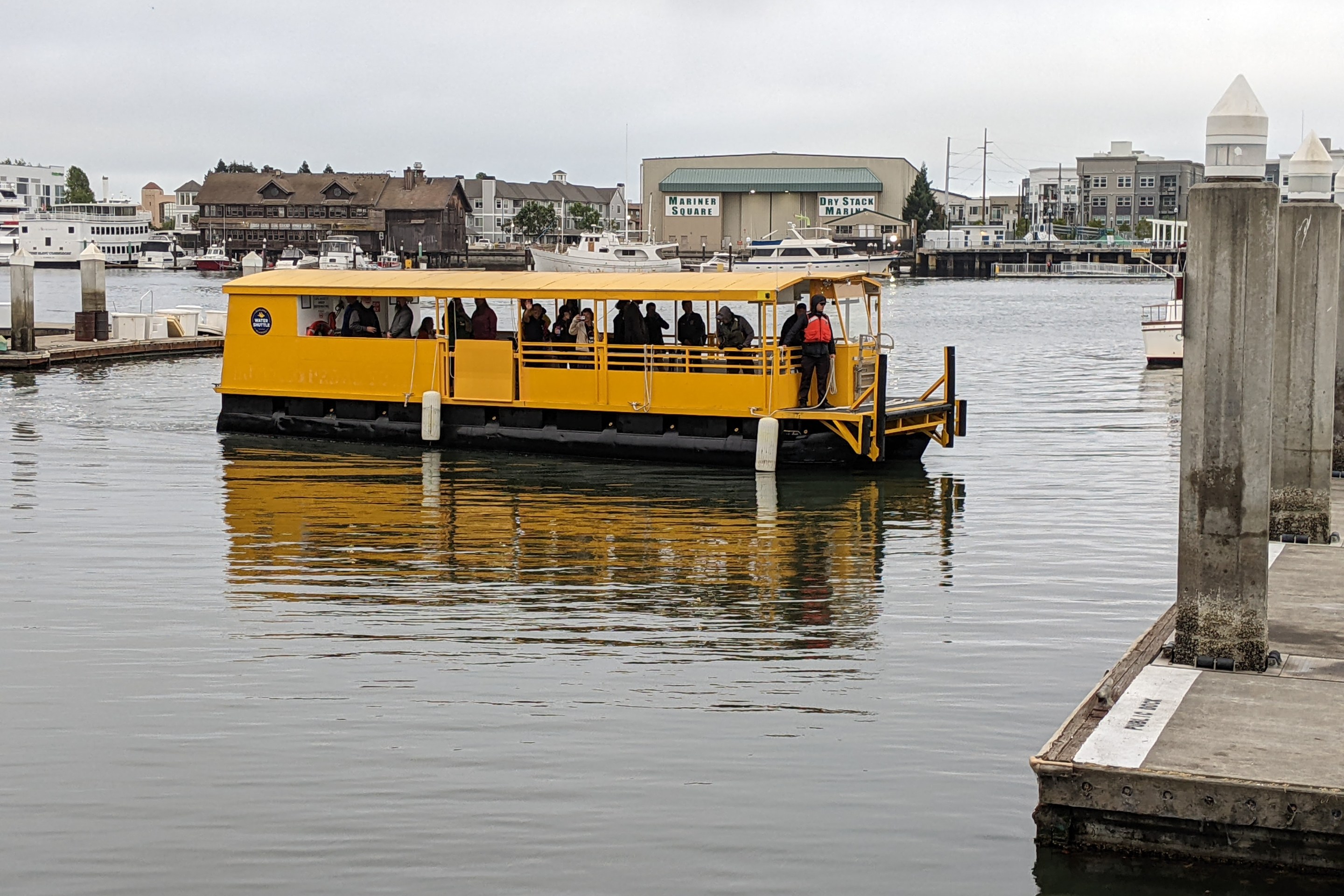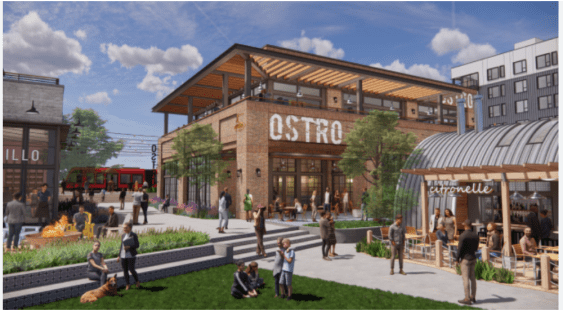
The Metropolitan Transportation Commission's (MTC) main auditorium in Oakland was standing-room-only Wednesday for an Allocations Committee meeting where the MTC board debated proposals by staff on how to spend the expected stimulus money when President Obama signs the bill into law. MTC Executive Director Steve Heminger explained the need to get the discussion started even before Washington made anything final because the deadlines for spending the stimulus money are so tight and the MTC doesn't want to return unspent funds.
Though the final transportation numbers for stimulus funding are not yet available, the MTC outlined the range that will be given to the Bay Area regardless of what is signed into law (Overview PDF) (Detailed PDF). As outlined in the meeting, transit funding for the region would outpace highways by more than double, or between $320-500 million, of which MTC staff recommended 65 percent should go to rehabilitation and preventive maintenance (a backdoor option that essentially allows operators to put stimulus money into operations).
Of the rehab and operations money, San Francisco's Municipal Transportation Agency (MTA) will receive the greatest share, at 25 percent, followed by BART with 24 percent, and the Valley Transportation Authority (VTA) with 17 percent, ratios that reflect funding strategies that have been developed at the MTC, including ridership, route miles, and revenue-to-vehicle miles.
Of the $140 million for local streets and roads, roughly 40 percent of the proposed rehabilitation projects have pedestrian and bicycle improvements.
Although one or two members of the public bemoaned the spending ratios, arguing that MTA carries 45 percent of riders and should receive commensurate funding, the greatest debate centered on the proposal by MTC staff to spend $140 million in stimulus funding on two expansion projects, the "train box" at the Transbay Terminal and the Oakland Airport Connector (OAC) from the BART Coliseum station
AC Transit and the VTA both requested
that the share of funding for rehab be higher than 65 percent, while
advocacy organizations, and an assortment of riders complained bitterly
that rehabilitation should be the primary objective, arguing expansion
projects would cut into operational funds. Speaker after speaker lamented that service shouldn't be cut for the sake of expansion, including a jeremiad by Reverend Scott Denman of St. John's Episcopal Church of Oakland, who said funding the OAC was a "moral decision" and the "airport connector is going to help people who can afford an airline ticket, not people who can't even afford a bus pass."
The MTC's Heminger bristled at the suggestion that they are robbing transit operators to pay for expansion:
A lot of the comment today talked about diverting money from the transit operators to these two projects and that is not a true statement. This is new money that comes from Washington with no strings attached. It doesn't have any operator's name on it, there's no pre-set percentage for rehabilitation versus expansion. There was a lot of spinning going on today from AC Transit's advocates, somehow complaining we're taking money from them. They don't have it yet, they never did.
The MTC was lauded for a provision it set that expansion projects be obligated by June, 2009, or the money will go to rehab. Heminger referred to the decision as striking a balance between "aging pains and growing pains."
We're taking a chance on both of the transit projects. On OAC thechance is we won't have a successful procurement like last time. On theTransbay train box they're trying to accommodate an idea on the flywhile they're designing a building. I think it's worth taking a chanceon both but I think also we need to be responsible so that if thechance doesn't pay off we put the money into the rehabilitation programand make sure we can spend it on something.
The Train Box
 Transbay Terminal rendering
Transbay Terminal renderingThe Transbay train box would allow future High Speed Rail trains to access the station and prevent the terminal from becoming, in San Francisco Supervisor and new MTC Commissioner Chris Daly's words, "just a billion dollar bus terminal." Though funding will need to be raised for Caltrain's electrification and a new tunnel from Townsend to Transbay before High Speed Rail can become a reality, the MTC said building the train box in the terminal now will save hundreds of millions of dollars in construction costs compared to building it further along in the process.
Santa Clara Commissioner Ken Yeager and Association of Bay Area Governments (ABAG) Commissioner Dave Cortese both expressed strong reservations about building an empty box under a building that would sit unused for years before HSR actually passed through it.
Commissioner Yeager asserted that Caltrain and HSRA were concerned about "The Box" and said, "The fact that Caltrain is concerned about 'The Box' should give us all pause." He argued the money for the train box should be put into the electrification of Caltrain or to connecting Caltrain to the Transbay terminal from Townsend and 4th Streets.
Heminger countered that the question should be whether we believe that trains are coming and pointed out state voters signaled they were comfortable putting $9 billion dollars toward its completion by passing Proposition 1A. Electrification of Caltrain has a funding shortfall, but the train box should go forward while there is a large hole in the ground, he urged.
After the meeting advocates suggested the VTA had prepped its commissioners, encouraging them to run interference at the meeting because the expansion capital projects proposed weren't under their purview. Heminger signaled the quibbles were over jurisdiction when he critiqued the letters sent to MTC from VTA and AC Transit, arguing the projects should be considered not on where they are located but on how many people they benefit.
Oakland Airport Connector
 Sketch of Oakland Airport Connector
Sketch of Oakland Airport ConnectorThe OAC is a plan to build an elevated tramway that would carry passengers from the Coliseum BART station 3.2 miles to the Oakland Airport, with a provision to add one intermediate stop at the Doolittle Flyover, where Hegenberger and Doolittle Drive meet. The "train-to-plane" project meets a number of MTC criteria for linking modes, but has had trouble getting off the ground, with a bidding process in 2007 ending in an impasse between BART and the chosen vendor over funding and revenue-sharing once the project was complete.
BART Project Manager Kathy Mayo argued it will be different this time. She said with the additional funding from MTC, cheaper cable technology that has been developed for automated guideway transit (AGT) in use on systems in Las Vegas and Minneapolis, exclusion of the Doolittle Flyover station, increased funding allocated from tolls, and a $44 million capital commitment from the Port of Oakland (which runs the Airport), BART was confident it could cover the $241 million needed to complete the project.
BART board member Tom Radulovich wanted all involved to think bigger.
He suggested BART consider the development and housing
opportunities of the length of the corridor, from the Airport past the
Coliseum, connecting with the future MacArthur BRT and the Eastmont
Mall. Much of the land is owned by the Port of Oakland, BART, and
other agencies, and could become a transit oriented development similar
to Fruitvale, but much larger, he suggested.
Oakland City Council Member Rebecca Kaplan was encouraged by the initiative shown from BART and its partners, but said she would still love to revisit at-grade project options like next-generation magnetic-guideway BRT, such as the system in use at Eindhoven Airport in the Netherlands. She said that new technology like this could mimic the smooth ride of a train but at much less cost, and sent this video for visual reference, explaining that she became a wonk while serving on the board of AC Transit.
Kaplan also argued the project could and should be improved to meet the expectations of voters who approved Measure B, which provided the initial funding for the connector. "Voters approved B by 82%, which is huge, but the OAC was portrayed to the public with intermediate stops." She said that social justice advocacy groups like Pueblo only agreed to advocate for Prop B because they were told that the OAC would serve numerous job centers and destinations along Hegenberger, like the FedEX and UPS depost, Harley Davidson, and the Teamsters Hall.
Above all, however, Kaplan wanted to see an improvement over the current AirBART bus system, highlighting the numerous users who would benefit from improved service. "There's a growing population of people in the East Bay who are choosing not to own cars and who rent cars periodically. That rental car depot at the airport is the best place in terms of pricing and availability."
MTC's Heminger disapproved of the idea of revisiting environmental reviews for other options. "The Bay Area has a lousy history of revisiting projects so often that we either drive them into unaffordability or we never do them at all. This project had been all the way through environmental review process and all the opportunities for public comment have occurred. It's time to put it out to bid."
The Appropriations Committee took no action but agreed to push the agenda item to the February 25th full-board meeting of the MTC.
Flickr photo:WarzauWynn





